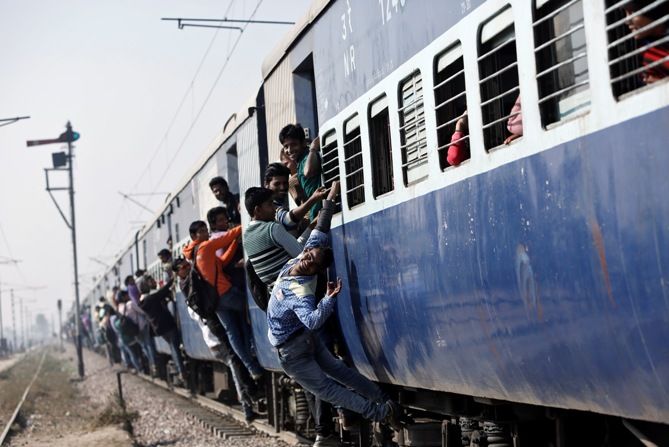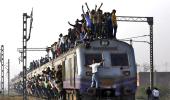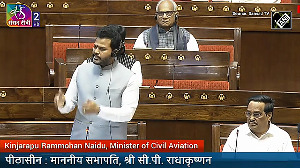
The national carrier is deprived of what is the cheapest and best form of funding for healthy business growth -- internal resources.
The Union railway minister, Suresh Prabhu, has drawn the attention of Parliament to the substantial rise in capital expenditure that will have taken place by the end of the current financial year.
This is needed not just to renew ageing assets to ensure safety but also to raise capacity and grow.
The issue is: Where is this money coming from and the way things are, can the railways service such expenditure?
While the Union finance ministry has been generous with budgetary support, the really rapid rise will be in financing through extra-budgetary resources, typically bonds floated by the Indian Railway Finance Corporation.
The former is relatively cheap money (less than three per cent) but uncertain, as it is dependent on the government’s fiscal situation.
IRFC funding, on the other hand, is costly (8.4 per cent in 2013-14) and makes it incumbent upon the railways to achieve a healthy margin in its operations.
It is here that the railways will have to seriously address the exceptionally high operating ratio (working expenses to traffic earnings) of 90 per cent for 2015-16, which indicates that very little surplus is generated from operations.
So the national carrier is deprived of what is the cheapest and best form of funding for healthy business growth -- internal resources.
The medium term trends revealed in the recently tabled CAG’s report on the railways for 2014-15 are illuminating.
Virtually the entire surplus (97 per cent) generated by freight operations goes to meet the deficit in passenger services.
Every class of passenger travel, except three-tier AC, loses money.
The report expectedly recommends that passenger fares should be raised.
However, the total number of passengers carried in the last three years has not just plateaued but fallen, even as passenger revenue has gone up.
If fares are raised further, more passengers are likely to keep walking away until revenue starts getting affected. The story is the same in terms of the scope for raising freight rates, with the railways continuing to lose market share.
If the scope for improving margins by raising tariffs is severely limited, there is only one way to go – reduce costs by improving efficiencies.
The railways ability to carry out internal reforms (they improve efficiencies) is thus vital for its healthy survival and growth.
The CAG’s report narrates the fate of one operation, recasting the railways financial statements along commercial lines.
This, among other things, will indicate if the bottom line, net profit or revenue, is realistic after providing enough for depreciation.
Started a decade ago with the assistance from the Asian Development Bank and a timeline of 30 months, the process is yet to be completed.
What is worse, the CAG’s department could not even get a reply from the railways to its query last year asking for the current status of the exercise.
There is another area that cries for reform.
Today, when every business is frantically going digital, it is imperative for the railways to publish a white paper detailing its digital road map.
The level of computerisation already achieved should enable the railways to go in for vastly greater data analysis and differentiated pricing based on seasonality and geographical pattern of demand.
This will enable more sophisticated incentive pricing.
There also cannot be any further delay in reorganising the railway board so as to have members dedicated to customer segments and an independent pricing authority which will take the politics out of fixing fares and freight rates.
Image: Passengers travel in an overcrowded train near a railway station at Loni in Uttar Pradesh. Photograph: Anindito Mukherjee/Reuters











